Calligraphy pens
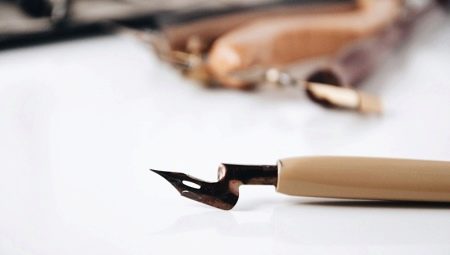
Calligraphy is translated from Greek as "beautiful handwriting" and is considered a subtype of art.
The meaning of calligraphy lies in the beautiful outline of words, in the correct arrangement of letters, a certain inclination and the font used. Calligraphy is hard work and a kind of meditation. Of course, knowing the basics of this time-consuming process is very important, but you should also know about the tools that are used for writing.
There is a wide selection of writing and calligraphy kits on the market: various pen nibs, all kinds of brushes and nibs. All of these can be found in any art store.
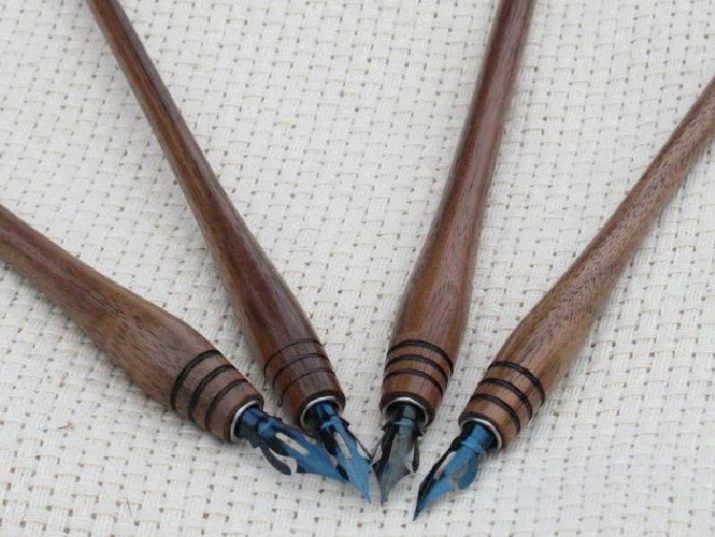
Peculiarities
The essence of the calligraphic pen is that with one stroke of the brush on paper, you can create a refined line or bend, which subsequently thickens, maneuvers, and then becomes thin again.
The writing tool works in such a way that with a slight pressure on the brush, the tip or tip draws a thin line, and with more pressure, the line gently and smoothly flows into a thick stroke. In this case, the line of transition from thin to thicker is not visible.
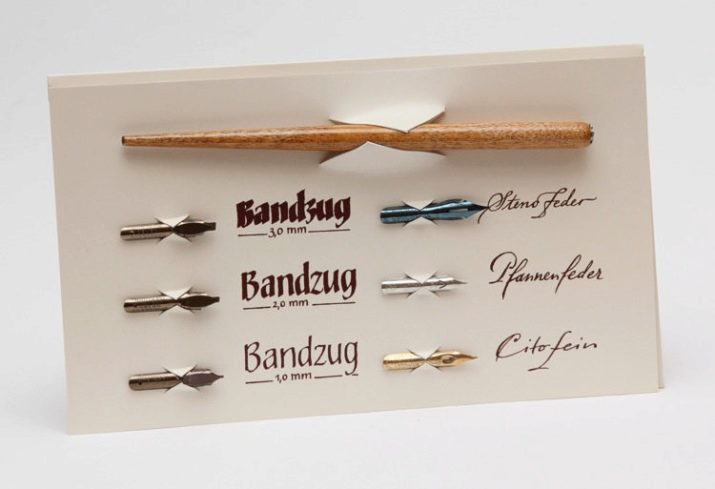
Many people will most likely now think that calligraphy is written only with brushes or bird feathers. The first, of course, is true, but not entirely. They wrote with brushes in the old days, when the possibility of inventing something else was not possible - there was no worthy analogue.
Likewise, at that time there was no analogue in the form of metal feathers. It was only in 1748 that Johannes Janssen invented the world's first steel nib, and only a century later the German company Heintze & Blanckertz patented this idea and began mass factory production of the product.
There are a large number of brands on the market today that make both nibs and fountain pens. With the development of production, variety and availability appeared.

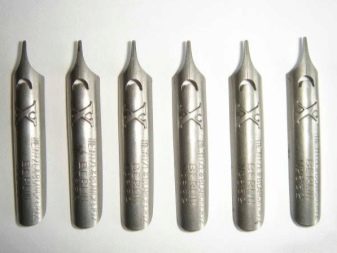
For people who are just getting acquainted with this art for the first time, special sets are sold. It remains only to choose the material from which the handle will be made, because how it should be held depends on this.
There are different parameters, based on which you can choose the right nib for calligraphy. These include weight as well as material and cost. The more famous the company that produces the product, the better the quality and the higher the price.
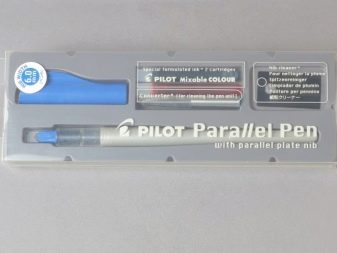
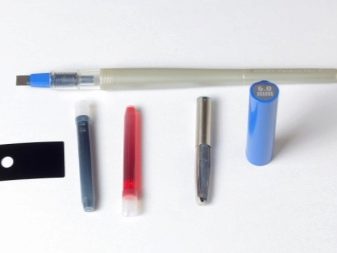
First of all, it is worth considering what the pen is made of. It consists of four components:
- tip;
- cloves;
- holes;
- immersion level.
Each manufacturer's tip has its own specific point. The smallest feather for some is considered thick for others.
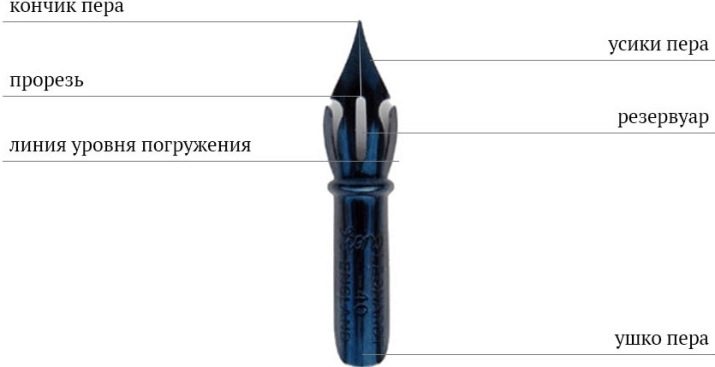
For convenience, feathers are usually subdivided according to digital sizes: 0.38, 0.5, 0.75, 0.77, 1.0, 1.25, 1.5, 2.0 mm... Another option for dividing feathers into types is a special designation. For example, it is customary to highlight: Fine, Soft Fine, Medium, Broad, Music.
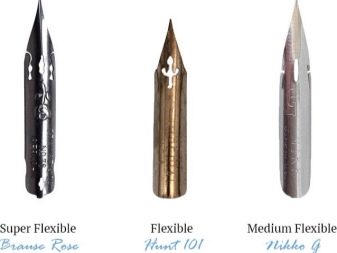
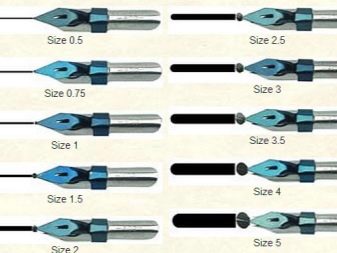
The hole is created so that the ink does not flow out in one big blot on the sheet, but is gradually fed to the tip according to the familiar principle of a pen.
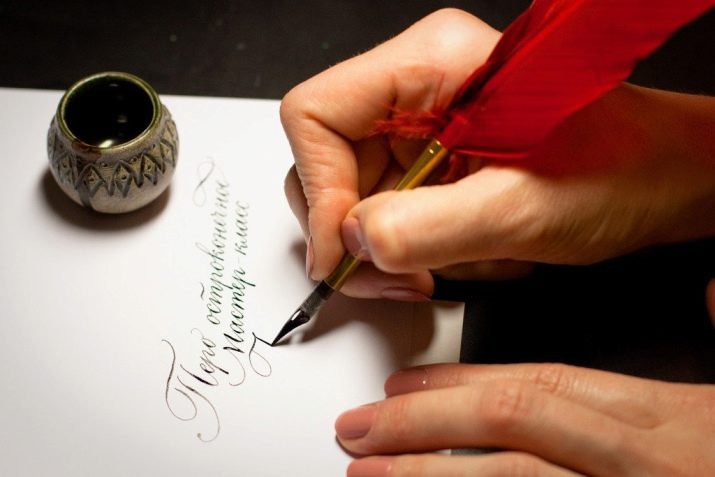
The ink is transferred by means of a spring that is wrapped around the brush.
Keep an eye on the hole in the tool - there should always be ink in it. But if you take too much ink, then, most likely, a large drop will simply roll down the smooth metal down onto the paper.
If a person does not trust the pen or is afraid to stain the paper, then in this case it is worth purchasing ink pens that have refill cartridges or removable cartridges.
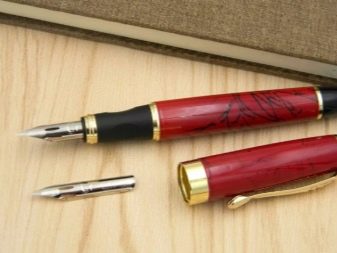
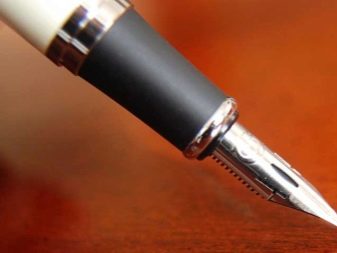
Principle of operation
The principle of operation of the pen is simple and consists in the teeth themselves. If the teeth, which are at the very tip as its components, are tightly compressed, and there is no pressure on the pen itself, then a thin sharp line is drawn. The lighter the pressure, the subtle line remains on the paper. But if you press harder, then the teeth will gradually begin to disperse, thereby increasing the line, making it thicker.
The disclosure occurs arbitrarily from pressing. The main thing is that this is done correctly, otherwise there will be difficulties with writing, since the tip will become unpleasant and very noticeable to scratch the paper.
You should always hold a brush or pen in the direction of the line, which will subsequently appear on the sheet. If this is a straight line, then you need to maintain strictly 90 degrees.
If you need a line at an angle of 30 or 75 degrees, then the brush should be held at this angle.
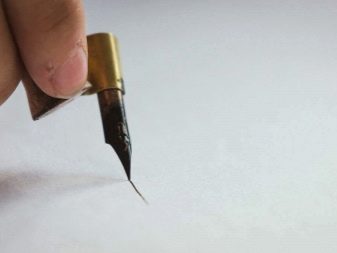
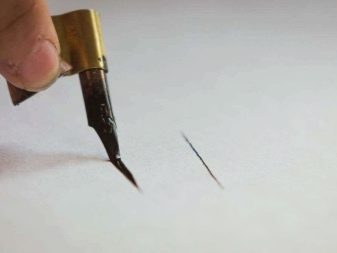
But if such a task seems to be beyond the power, then there are special oblique holders in which the pen can be immediately installed at the desired angle.
The length of the line and its thickness is also influenced by the flexibility of the pen itself. Flexibility is called Flexible, which means “flexible” in English. Each manufacturer has its own flexibility, which is indicated on the box of nibs.
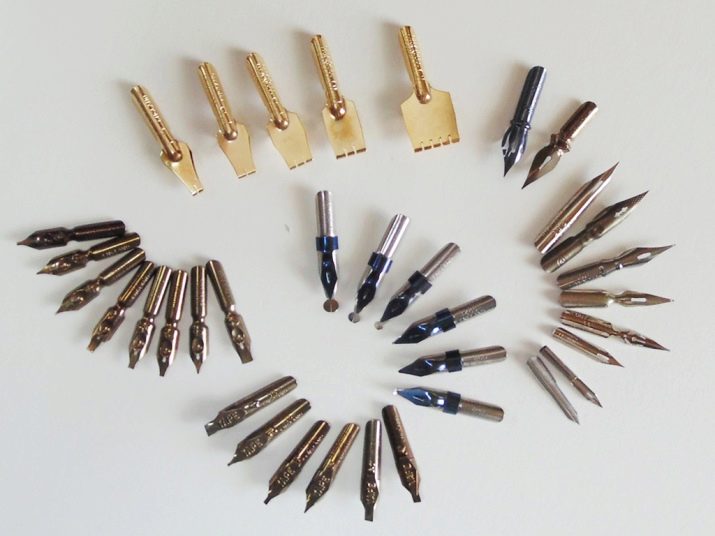
Flexibility can be medium, super flexible, or light.
Combinations between flexibility and nib thickness give the writing a distinct effect. But before looking at flexibility, you should pay attention to what font you plan to use when writing - both the capabilities and the letter itself depend on this.
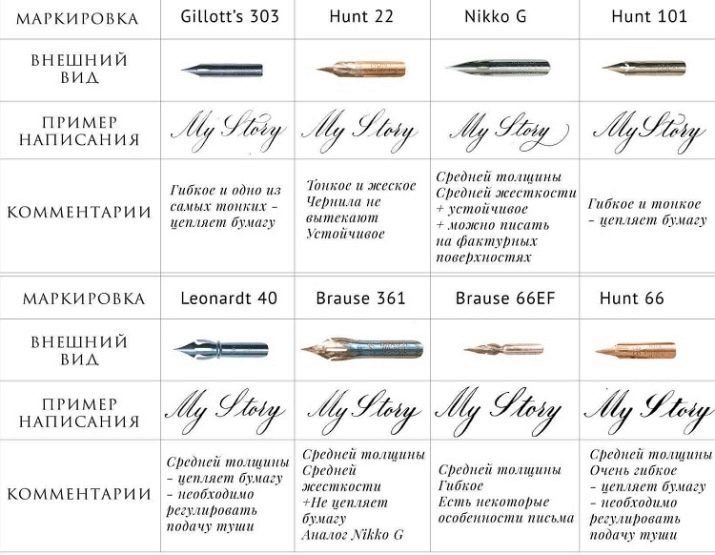
Views
There is a huge variety of fountain pens, single pens and writing kits produced in today's world. There are various kits: two pens with two selected nibs, one pen and three or more types of nibs.
Except for isolated cases or special orders, the companies produce standard nibs or sets, which include sizes F (fine), M (medium), B (broad). Extra fine (EF) nibs are also found in some rulers.
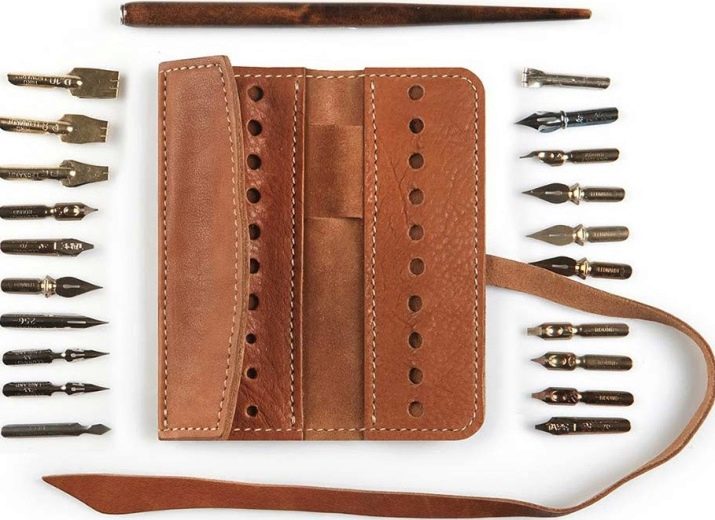
Famous brands present a small line of pens with flat nibs of different sizes, which are called the abbreviation stub.

Thin feathers
Initially, they were created for accountants and bookkeepers, because they had to write numbers in narrow columns, and the text had to be written just as finely. Now such pens are classified as extra fine or fine-writing.
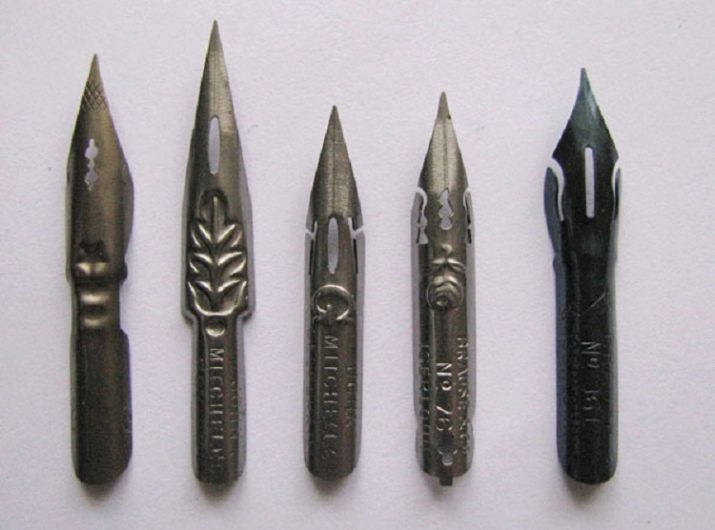
In writing, the lines were thin, the tip of the instrument was long and hard. Writing is a little difficult due to the fact that the teeth, moving apart, scratch the surface very hard. They quickly fell into disrepair due to their subtlety, broke and could even rust.
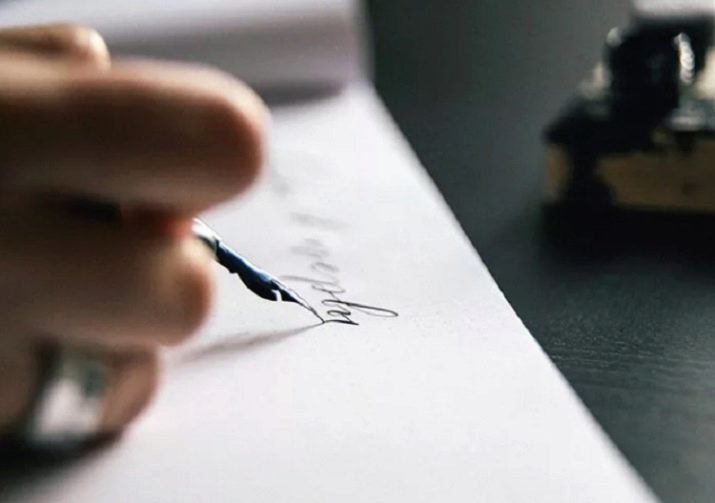
Feathers for postcards
Sending postcards at all times cost significantly less than a full letter, which is why postcards were in great demand among consumers. And companies began to produce special pens and kits for writing on postcards, since standard accounting pens were not suitable for this business due to their fragility. Firms began to produce softer and more flexible nibs for comfortable writing on less dense cardboard.
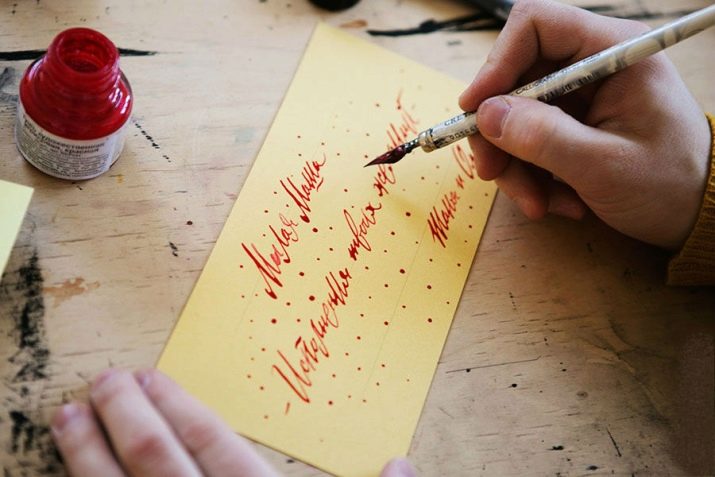
For shorthand
It is worth dwelling on pens for shorthand. At that time, there were no copiers and scanners, and people often had to copy everything by hand. For this reason, shorthand was very popular, and a special nib was created for it to make it easier to work with.
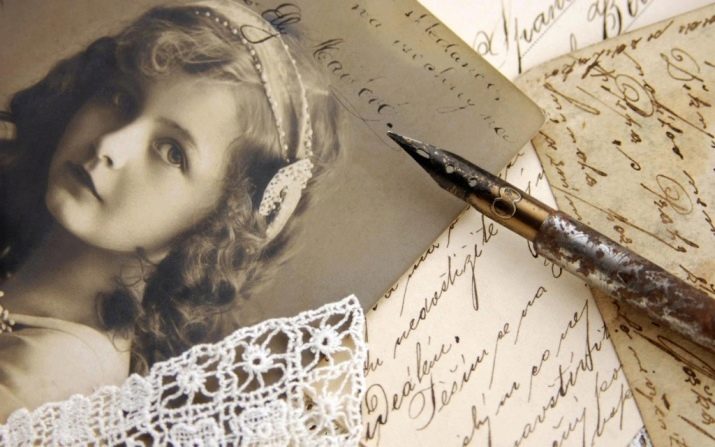
The pen was fitted with a larger ink “stem” than standard ink. The long body fits comfortably in the hand. Such pens were called Steno and did not make work difficult, did not scratch the paper, and they could write as quickly as a person himself could write. The pens were popular with people who wrote a lot.
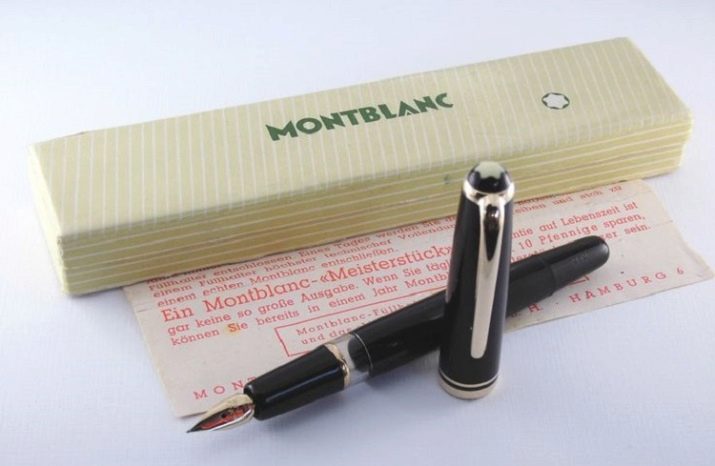
Glass pen for calligraphy
Special calligraphy pens have appeared for the sophisticated person. The tip has a certain size, one-piece body and no cartridges.
Many amateurs and professionals notice that writing with a glass pen is somewhat remotely reminiscent of writing with a goose pen. In either case, a quick letter is simply impossible. Most likely, this can be suitable for meditative activities, for enjoying the process of calligraphy and drawing various decorations on letters and numbers.
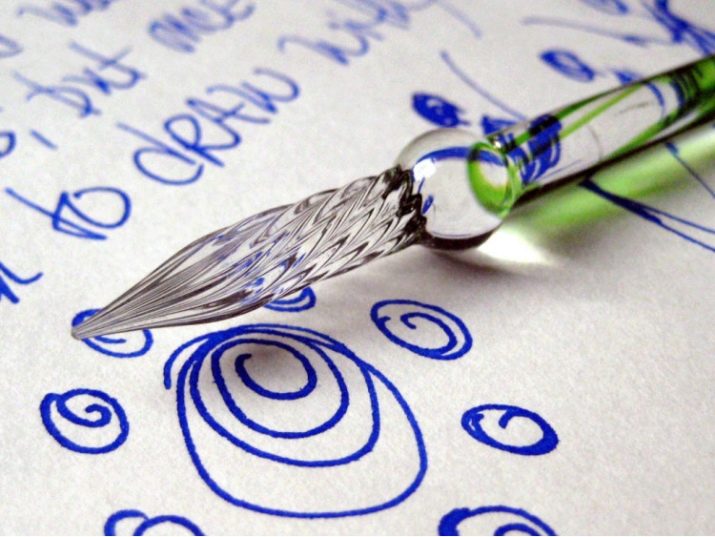
For beginners, ball or round nibs are suitable. The line of such brushes will be even, and the writing will not be such a difficult job, because the teeth will not go to the sides.

Selection rules
A correctly selected calligraphy tool will serve for a long time and will be able to delight its owner for many years. For this reason, during the buying process, you should pay attention to the following qualities:
- the nib should have a smooth, mirror-like surface without scratches, cracks or chips;
- the tip of the instrument must be flat and not deformed;
- the teeth of a good instrument should be the same size and symmetrical.
If the pen meets all these requirements, then it will not scratch or tear the paper.
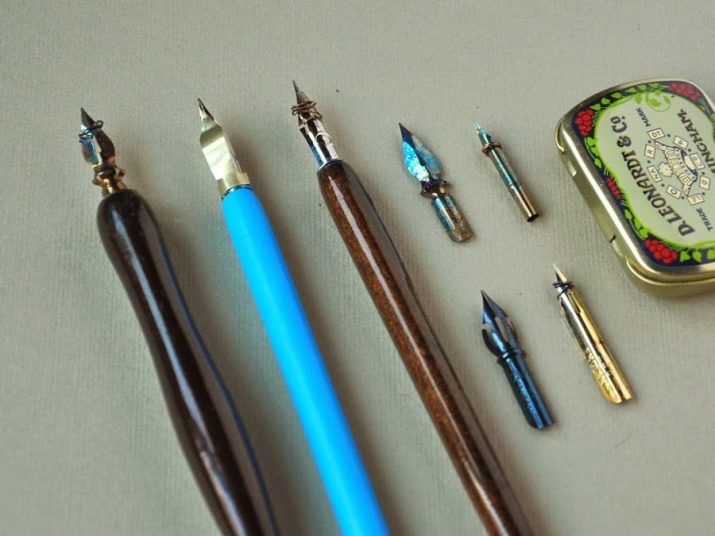
See below for an overview of classic writing pens.







